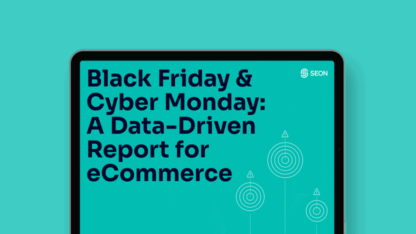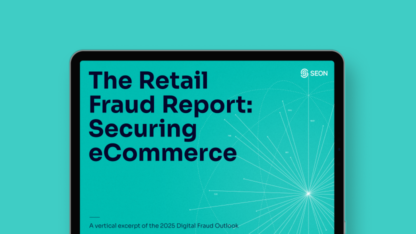Chargebacks are an unfortunate byproduct of digital commerce. For retailers, they represent lost revenue, but also pose threats to brand credibility and payment processing privileges. As fraudsters become more sophisticated and consumer behavior becomes more unpredictable in the face of increasing economic uncertainty, turning to specialized chargeback providers is understandably appealing. These providers promise operational ease, dispute management and revenue recovery, compelling benefits for resource-strained merchants.
Yet, exclusively depending on these sole-purpose providers can inadvertently obscure critical operational gaps and hidden expenses. Retailers should thoughtfully consider whether chargeback management alone addresses their broader risk and fraud prevention needs. With the right proactive strategies and technologies, a comprehensive approach might yield greater value.
Understanding the Scope of Chargeback Providers
At their core, chargeback providers exist to manage post-transaction disputes on behalf of merchants. They act as go-betweens in the tri-party conflict involving the customer, the bank and the retailer. By collecting evidence and building responses, they aim to reclaim lost revenue and reduce chargeback ratios to acceptable thresholds. For retailers dealing with high volumes or limited internal resources, this outsourcing model offers immediate relief.
However, a purely reactive solution does not address the root causes of disputes, especially those stemming from friendly fraud or preventable friction-induced chargebacks. This is where platforms like SEON diverge from the pack, supporting real-time fraud detection using digital footprint analysis, device intelligence and dynamic scoring to catch high-risk transactions before they escalate, offering a shift from recovery to prevention.
Navigating Recovery Realities
Chargeback vendors with a chargeback guarantee often promote their services with compelling metrics — 90% recovery rates, 80% win rates and so on. But the devil is in the details. The average merchant win rate across all industries hovers closer to 20- 40%, and friendly fraud cases, which make up the majority of disputes, are notoriously difficult to win. In reality, most retailers only see modest gains compared to the number of disputes filed.
Even when funds are recovered, the ROI is questionable. Success-based pricing models often take a hefty percentage of the refunded amount. If a $200 order is disputed and $50 is recouped, only for a provider to keep 25%, the merchant nets just $37.50. That math quickly deteriorates at scale.
SEON offers a counterpoint: by preventing fraudulent or risky transactions upfront, it reduces the volume of chargebacks retailers need to fight at all, eliminating the need for costly recovery processes and improving margins over time. Rather than relying on chargeback recovery services that only step in after revenue is lost, working with a fraud prevention platform stops bad actors before they transact, minimizing financial exposure and protecting long-term customer relationships.
Fee Structures That Erode Margins
While many chargeback guarantee providers pitch themselves as cost-effective partners, their pricing structures can quickly erode a retailer’s profit margins. Per-case fees, monthly minimums, success-based commissions and hidden setup charges are commonplace. The merchant may win back funds, only to see most of them siphoned off by the service itself. What initially appears to be a revenue recovery engine often turns into a margin killer.
Moreover, these expenses are often unpredictable. A sudden uptick in disputes can balloon costs unexpectedly, especially if pricing is tiered or volume-based. Especially with chargeback guarantee providers, costs can increase significantly over time. With SEON’s unified platform, retailers instead pay for risk analysis and prevention technology that spans use cases — chargebacks, account takeovers, promo abuse and more. Rather than charging for each incident, SEON helps retailers prevent those incidents entirely, unlocking far greater cost efficiency. And even if a chargeback does occur, you only pay if you win the dispute, helping to keep costs down.
Operational Dependencies and Vendor Lock-In
Retailers that outsource chargeback management risk developing operational dependencies that weaken internal capabilities. Over time, teams become less familiar with the reasons chargebacks occur, how they evolve or how to contest them independently. In effect, the knowledge that should drive a stronger customer experience and fraud prevention gets trapped outside the organization.
This creates a form of vendor lock-in. Once processes and data flow through a third-party provider, switching or regaining control becomes increasingly complex. SEON’s approach is fundamentally different. It empowers fraud and risk teams with the tooling, telemetry and rules to adapt responses quickly and in-house. With full transparency into transaction scoring and risk signals, retailers can build internal expertise that supports both scalability and autonomy.
Missed Opportunities for Upstream Prevention
As mentioned, chargeback providers treat the symptom, not the root cause. Because they step in only after a dispute has occurred, they miss valuable upstream signals that could prevent similar issues. For instance, repeat offenders, suspicious purchasing behaviors or mismatched device and user data may all go undetected. Retailers lose the ability to learn from patterns, leaving themselves vulnerable to future fraud.
With a prevention-first model, SEON closes this feedback loop. Its real-time detection tools assess every transaction for risk signals like device spoofing, IP masking and synthetic identities. These insights help retailers avoid transactions likely to become disputes. Rather than building reactive workflows around chargebacks, SEON helps eCommerce businesses catch fraudsters before they impact revenue and operational costs.
Reputational and Compliance Risks
Chargebacks can also serve as a regulatory red flag as card networks like Visa and Mastercard monitor merchant chargeback ratios closely. Crossing certain thresholds can trigger enrollment in monitoring programs, higher processing fees and even blacklisting. Once in these programs, recovering good standing requires significant effort and time.
Inconsistent or poor handling of chargebacks by external providers may further jeopardize compliance. If disputes are mishandled or evidence is filed late, it reflects on the merchant, not the vendor. SEON’s preventative technology mitigates these risks by reducing chargeback volume altogether. By maintaining lower chargeback ratios through smart detection, retailers protect their payment processing relationships and brand integrity.
Choosing a Comprehensive Approach
Retailers shouldn’t have to choose between protecting revenue and preserving operational control. While specialized chargeback providers play a valuable role in addressing specific operational burdens, embracing complementary prevention-focused technologies delivers greater strategic and financial advantages.
True resilience comes from addressing the root causes of chargebacks, not just the aftermath. By investing in prevention-first technologies like SEON, eCommerce businesses can reduce dispute volume at the source, maintain ownership of their risk strategy and build the internal muscle required to adapt to tomorrow’s threats.
How Bilt Reduced Chargebacks
“SEON’s incredibly flexible rule writing and ease of launch allow us to respond quickly to emerging fraud threats.”
Sources:
- FintechFinance News: The Majority of Merchants Challenge Fraudulent Chargebacks – But Rarely Win










